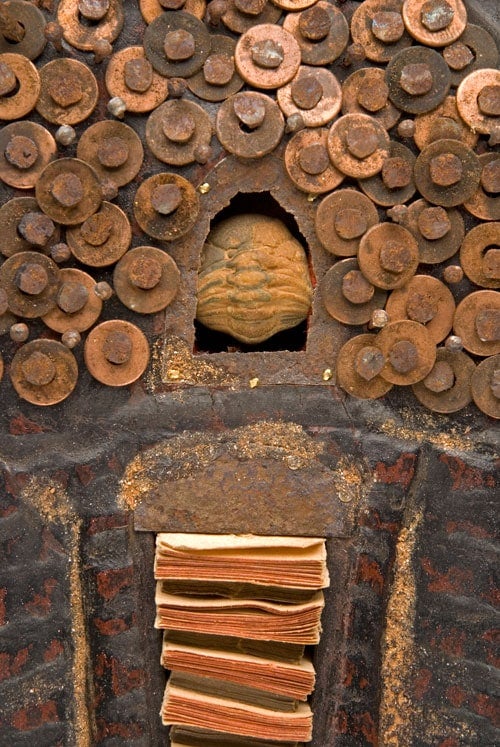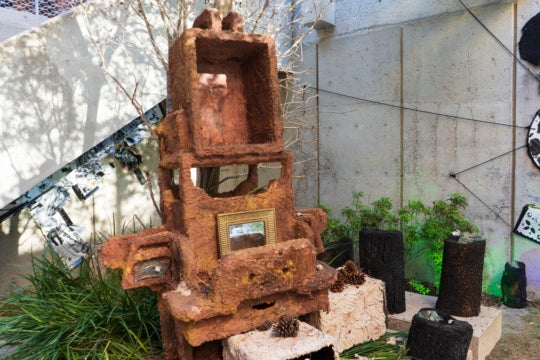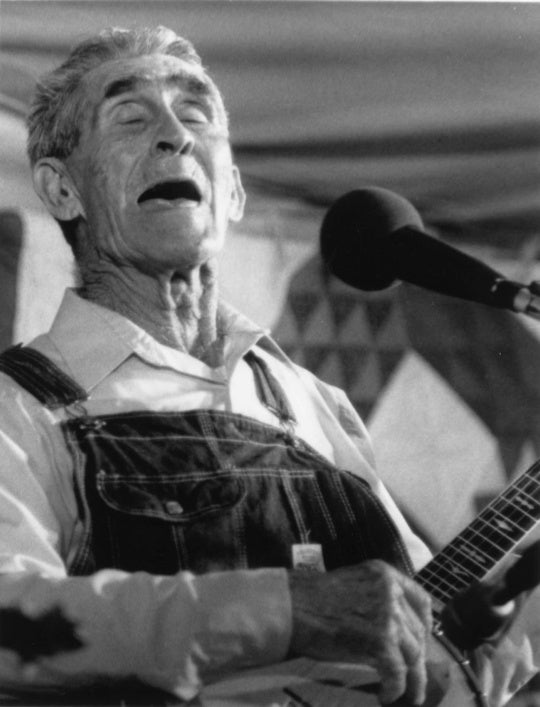
Sonya Clark’s exhibition “The Hair Craft Project” at Georgia State University’s Welch Gallery celebrates the artistry of African-American natural hairstyles and stylists. The exhibition comprises 11 photographs of Clark and the hairstylist who created the style in each work. The brightly colored backgrounds call your attention to the intricately styled braids weaved into the back of Clark’s hair, which the artists uses as a canvas for the stylists’ handiwork. Although simple in its approach, the concept digs deep into our history and circumstances of a people. According to the text in the gallery, Clark contends, “The project bridges boundaries between hair salons and art galleries as sites of aesthetics, craft, skill, improvisation, and commerce.”
Clark maintains that hairstyling is the first textile art. Just as textiles are made from the weaving together of fibers, braiding hair is essentially the weaving together of hair to create wearable art. Braids, as seen in Clark’s images, can take some very intricate patterns, and the stylists are necessarily dexterous. From braiding to weaving to curling to coloring, hairstyling is an expression of the imagination.

Hair has a long history of being worn as art. In cultures all over the world, hairstyling has been a means of self-expression and an indicator of cultural identity. In the upper echelons of some cultures, hair has also served as a measure of status, from European Victorian styles to Japanese Geisha styles to tribal customs in Africa. Today, things are no different. Walking the red carpet, major celebrities set the trends in hairstyling that popularize hairstyles among the more common folk.
In recent years, hair has been a major topic of discussion among women of the black community. Today, black women choose styles that defy convention. The braided styles that Clark models in her photos were styles of contention not that many years ago, when braided styles were considered unprofessional. In a widely reported case in 1988, the Equal Opportunity Employment Commission deemed that Hyatt Hotels showed bias against an employee, Cheryl Tatum, who wore cornrows. After much protest and litigation, black women are now able to wear their braided hair in many professional environments, but this is still a matter of debate. Recently, young girls in South Africa demonstrated for the right to be able to wear their natural hair to school against the wishes of the school administration. As of September 6, 2016, some 32,000 people had signed a petition to stop discrimination against students who want to go natural.

The natural hair movement we’re experiencing today really began around 2000. But since the 1960s, it had been common for black college students to leave home and find their African roots on college campuses. Part of the self-discovery was cutting off their chemically processed hair and sporting afros or dreadlocks instead. But something changed around the turn of the millennium. As more black women gained power in the media, books and magazine articles were published that disseminated the historical legacy of black hair, asserting an intervention fueled by knowledge of their history and culture. This public media space was ideal for sharing haircare rituals with black women around the world. Now you can find thousands of natural hair care tutorials on YouTube. Online magazines are dedicated to the subject, and hair-related businesses owned by black women are flourishing, fueled by women who understand the importance of identity, of being accepted and recognized wholly as one’s self.
For the duration of the project, Clark served as a walking work of art as she wore the styles seen in the exhibition. By including the stylists in the frame, Clark recognizes the artistry and power inherent in hairstyling and asserts its centrality in our lives. For many stylists, their clients are their canvases. They use their imaginations to craft styles that fit their clients’ character — shaping identity among a clientele. Clark says the hairstylist is her hero, and this sentiment is true for me, as well. After my stylist of choice works her magic, I feel exhilarated when I receive compliments from others; it boosts my confidence and establishes an identity for myself.
Sonya Clark will speak at Georgia State University, Speaker’s Auditorium, on November 10, 4-5pm. “The Hair Craft Project” is on view through November 11.
Shantay Robinson earned her MFA in Writing from the Savannah College of Art and Design. She has written artist profiles for AFROPUNK and Urban Lux Magazine, and was a participant in the first cycle of BURNAWAY’s Art Writers Mentorship Program.




